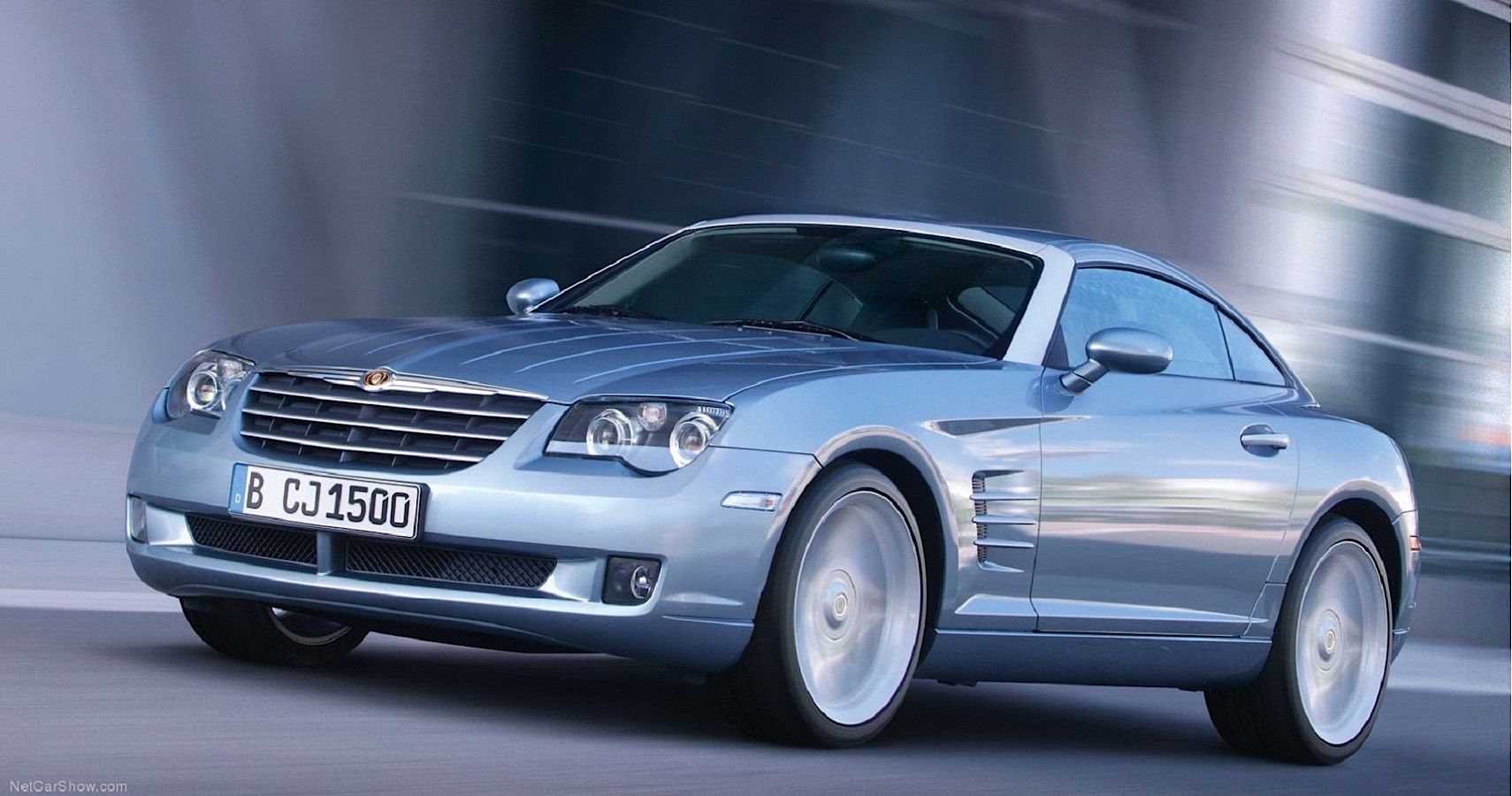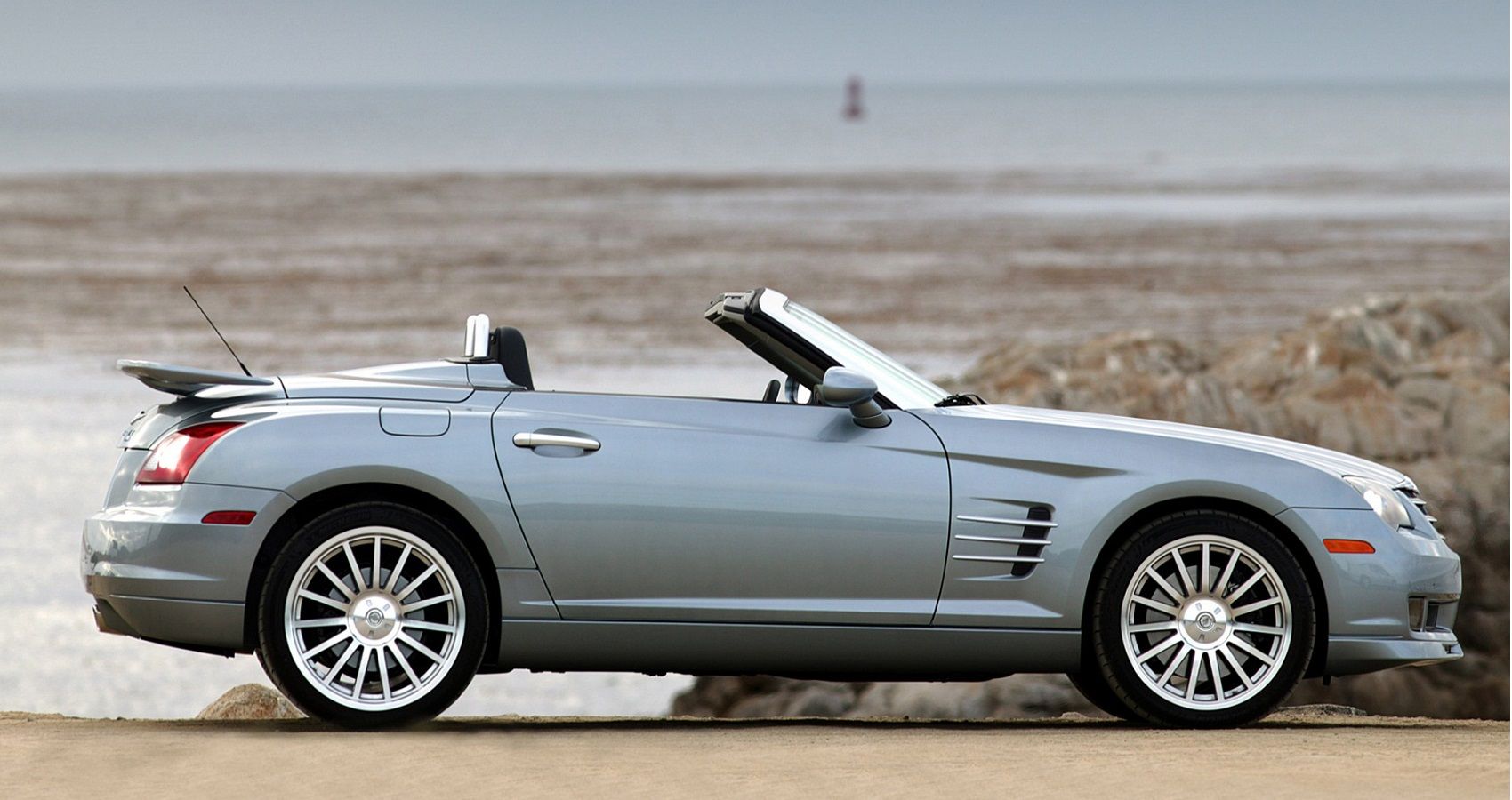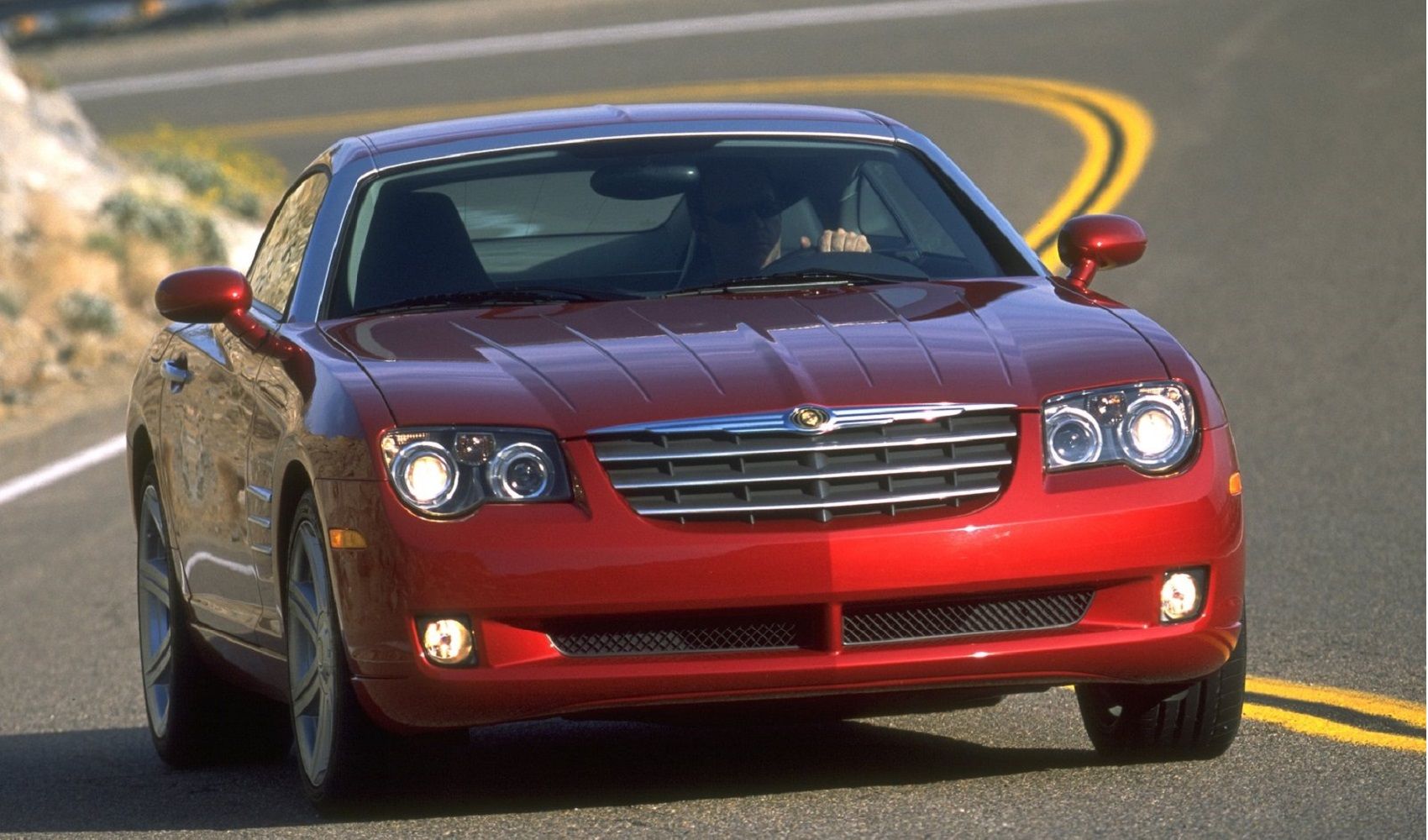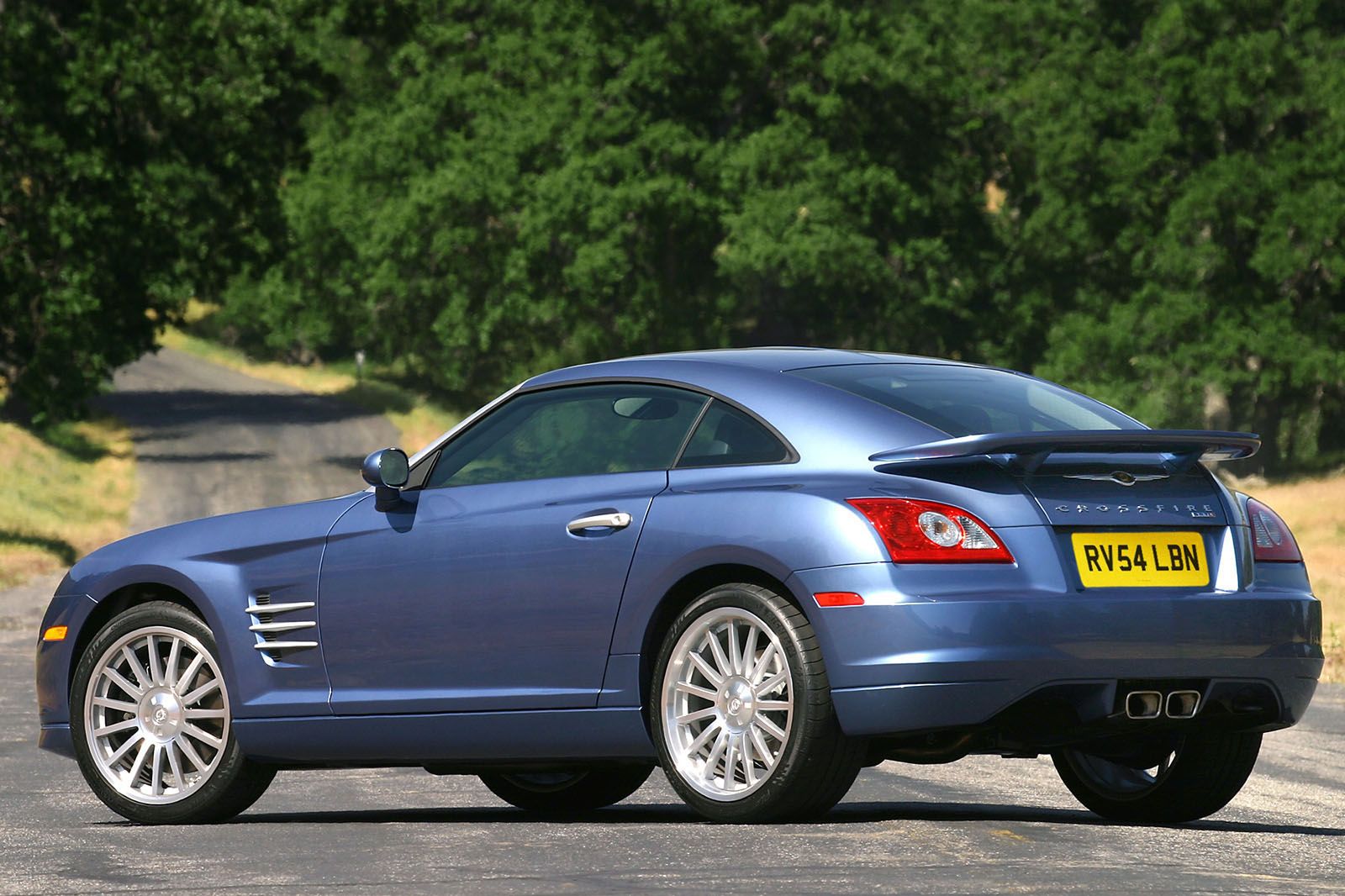The early 2000s represented the dawn of a new era for many automotive companies, including Chrysler. Fresh after their acquisition by Daimler in 1998, the newly formed Daimler-Chrysler group had sought to revamp the image of their American counterparts. After the death of the ill-fated Prowler, Chrysler had a void for a niche sports car that needed to be filled for the new millennium. Thanks to a generous helping from the Mercedes-Benz parts bin, the Chrysler Crossfire was then conceived.
Produced from 2004 to 2008, the Crossfire was a distinctive and quirky job that seemed a bit lost in terms of its true identity. Buyers easily took notice of this, which resulted in a catastrophic flop, especially in the model's later years. The Crossfire was intended to be the halo of Chrysler's fleet, soaring high as a testament to the brand's willingness to push the norms of sports cars. Instead, it became a spectacular failure.
Why Chrysler Built The Crossfire
The public's first introduction to the Crossfire was brought forth in the form of an interesting concept car that first debuted in 2001. Designed by Eric Stoddard, who'd hailed this prototype as being for "anyone who is looking for the thrill of driving. It's light, nimble and powerful with an expressive personality". The concept version of the car was enough to cause a stir in the American public, generating a response that was positive enough for Daimler-Chrysler to actually consider building the damn thing. However, serious changes to its appearance were then carried out by Andrew Dyson, in an attempt to make the overall styling fit the image in which the parent company was trying to convey, as well as to make the car a bit more practical in the real world.
The sheer notion of a proper sports car was something unfamiliar to the Chrysler badge. As a parent company, they'd built the original Dodge Viper and the Plymouth Prowler, with the latter even branded as a Chrysler during its last years of existence, before shuffling off this mortal coil. Even so, in terms of the Chrysler badge itself, the most recent, proper performance car to carry their nameplate was the Chrysler 300 Hurst of the 1970s, which was an absolute tank and certainly not built with any plans of cornering in mind.
Furthermore, the Prowler was never intended to be branded as a Chrysler, as the demise of Plymouth was something that hadn't been properly foreseen during the time of that car's inception. Daimler-Chrysler was certainly thinking outside the typical boundaries laid down by the American manufacturer. Throughout the 1990s, Chrysler had primarily produced a series of boring, FWD sedans that dabbled with cab-forward styling, but didn't offer much else. As a result, the nature of a sports car being sold under this brand's nameplate was something of a daring move on Daimler's part.
Was The Chrysler Crossfire Really That Bad?
On paper, the Chrysler Crossfire seems like a hell of an idea. Its basis is essentially a small, RWD sports car with two seats and a decent curb weight of around 3,000lbs. Not terribly heavy, but not exactly a featherweight, either. The entire model was based upon the Mercedes-Benz R170 platform, which was also shared by the Mercedes-Benz SLK 230. Chrysler's then-parent group at Daimler had known the American market well, and had been successfully selling cars in the United States for several decades prior to the Chrysler Crossfire.
However, selling cars in this country under the Mercedes-Benz nameplate was one thing, selling cars under a different moniker (especially an American one) would prove to be an entirely different challenge for the German automaker. To add some credence to their newfound territory, Daimler-Chrysler had initially fitted the Crossfire with the Mercedes-Benz 3.2L M112 V6 engine, which was rated at an uninspiring 215bhp. Combined with the hefty base price of $33,620 (which equates to a hair over $50k in today's money), the staggering cost for such a low output had deterred several buyers, especially with cheaper alternatives that offered better power-to-weight ratios.
By 2005, after just one model year, the Crossfire would eventually get a jolt from the defibrillator via the Crossfire SRT-6 variant, a much more athletic version, which touted an AMG supercharger that boosted the output up to 330bhp. Still, only 4,071 of the SRT-6 cars would ever be built, signifying a dismally low demand.
Altogether, the Crossfire shared roughly 80% of its hardware with its Mercedes-Benz counterpart. Furthermore, each of the cars' distinctive bodywork had been crafted by Karmann, the famed German coachbuilder. This factor had resulted in the Crossfire being built and tested in Germany, which heightened the overall costs of producing these cars and then shipping them off to the United States. This was one of the main reasons why the cars had such a high price on the American market, and also one of the prime causes that would eventually put the nail in the Crossfire's casket.
Why We Remember The Chrysler Crossfire Today
The Chrysler Crossfire was essentially a failure, only seeing a spike in sales during the first couple years of its existence. Daimler-Chrysler had originally projected a run of 20,000 units each year, although it would never see that quota met, not even close. For its final run in 2009, which were just leftover 2008 models, only 499 Crossfires were sold on the U.S. market.
Altogether, the car's high price and low performance had sealed its fate from the beginning. Consumers simply weren't willing to dish out the cash that Daimler-Chrysler demanded for the car, especially considering the foreign nature of a Chrysler-branded sports car. Its styling was also an issue, with Top Gear's Jeremy Clarkson even suggesting that the rear of the car resembled a dog's stance whilst defecating. At the end of the day, Daimler-Chrysler was feeling rather ballsy by creating such a car, but their execution proved to be fatal.
Sources: CarSalesBase, SRT-6, Finatopia




